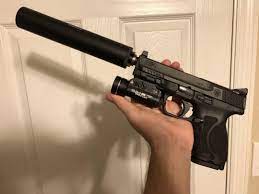The Role of Gun Trusts in NFA Compliance
The National Firearms Act (NFA) holds as one of the critical legislations in the United States governing the acquisition and transfer of certain types of firearms. Introduced in 1934, the NFA targeted primarily at regulating the purchase, property, and move of machine guns, brief-barreled rifles and shotguns, suppressors, harmful devices, as well as any other tools categorised through the act. Understanding its particulars is essential for firearms enthusiasts and most people. Let’s explore what you ought to understand the National Firearms Act.
1. Traditional Framework and Function:
Inside the wake from the Prohibition-age gang physical violence along with the proliferation of criminal action involving firearms, the NFA was passed on to suppress the blood circulation of certain types of weaponry deemed particularly hazardous or easily concealable. The legislative intent was to manage these firearms with the national stage, imposing tough signing up requirements and taxes on their transfer.
2. Controlled Firearms and Devices:
The NFA categorizes firearms and gadgets into several classes, which includes unit firearms, short-barreled rifles and shotguns, suppressors (silencers), harmful devices (for example grenades and bombs), as well as any other weaponry (like cane pistols or firearms disguised as other objects). Each classification features its own group of regulations and demands, which include extensive background record checks and registration functions.
3. Conformity and Enforcement:
Compliance using the NFA is required for anyone and entities seeking to hold or exchange regulated firearms and units. This consists of filing the appropriate kinds with all the Bureau of Alcoholic drinks, Tobacco, Firearms and Explosives (ATF), make payment on requisite income taxes, and going through comprehensive background record checks. Failing to abide by the NFA can result in extreme penalties, such as significant charges and imprisonment.
4. Taxes Stamps and Transfers:
One of the hallmarks of the NFA is the requirement of income tax stamps for that transfer of governed firearms and gadgets. These stamps work as proof of repayment of the applicable income tax and should accompany the firearm throughout its acquisition. Moves of NFA goods must be approved by the ATF, which conducts extensive background checks on both the transferor and transferee.
5. Affect and Controversies:
Over the years, the NFA has started significant controversy concerning its effectiveness in lessening criminal activity along with its compatibility with the 2nd Amendment right to carry biceps and triceps. Proponents believe that it may help prevent the proliferation of harmful weaponry, while pundits contend that it imposes excessive limitations on regulation-abiding citizens. Furthermore, the procedure of obtaining NFA products could be time-taking in and expensive, more fueling dispute.
Bottom line:
The national firearms act continues to be a basis of firearms control in the usa, shaping the landscape of pistol acquisition and transfer for pretty much a hundred years. Although its procedures are intricate along with its setup subject to controversy, learning the NFA is crucial for everyone working in the firearms local community. By adhering to its specifications and staying well informed about its implications, individuals can understand the regulatory platform around these professional firearms and products.


